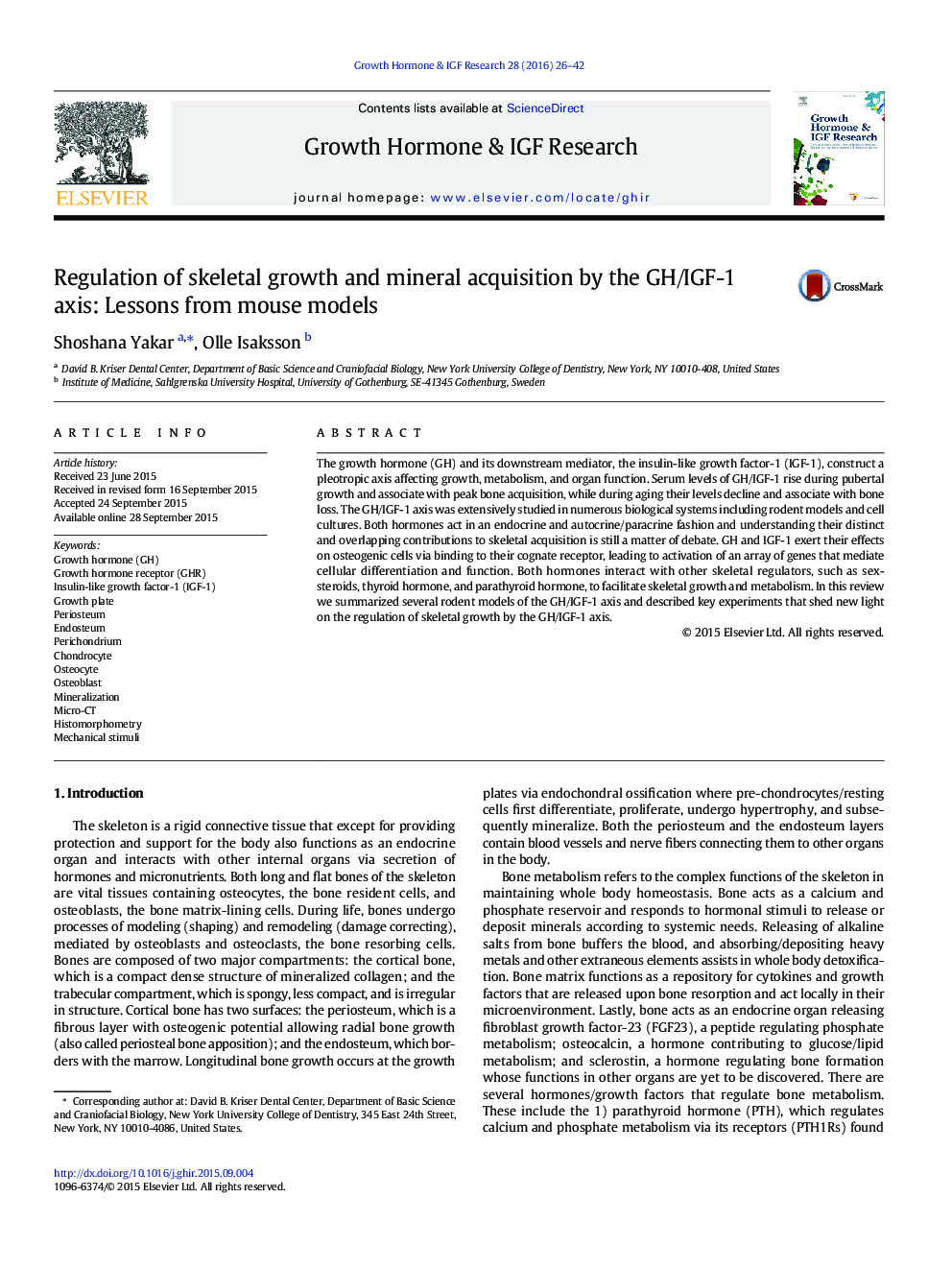| Article ID | Journal | Published Year | Pages | File Type |
|---|---|---|---|---|
| 5901763 | Growth Hormone & IGF Research | 2016 | 17 Pages |
The growth hormone (GH) and its downstream mediator, the insulin-like growth factor-1 (IGF-1), construct a pleotropic axis affecting growth, metabolism, and organ function. Serum levels of GH/IGF-1 rise during pubertal growth and associate with peak bone acquisition, while during aging their levels decline and associate with bone loss. The GH/IGF-1 axis was extensively studied in numerous biological systems including rodent models and cell cultures. Both hormones act in an endocrine and autocrine/paracrine fashion and understanding their distinct and overlapping contributions to skeletal acquisition is still a matter of debate. GH and IGF-1 exert their effects on osteogenic cells via binding to their cognate receptor, leading to activation of an array of genes that mediate cellular differentiation and function. Both hormones interact with other skeletal regulators, such as sex-steroids, thyroid hormone, and parathyroid hormone, to facilitate skeletal growth and metabolism. In this review we summarized several rodent models of the GH/IGF-1 axis and described key experiments that shed new light on the regulation of skeletal growth by the GH/IGF-1 axis.
